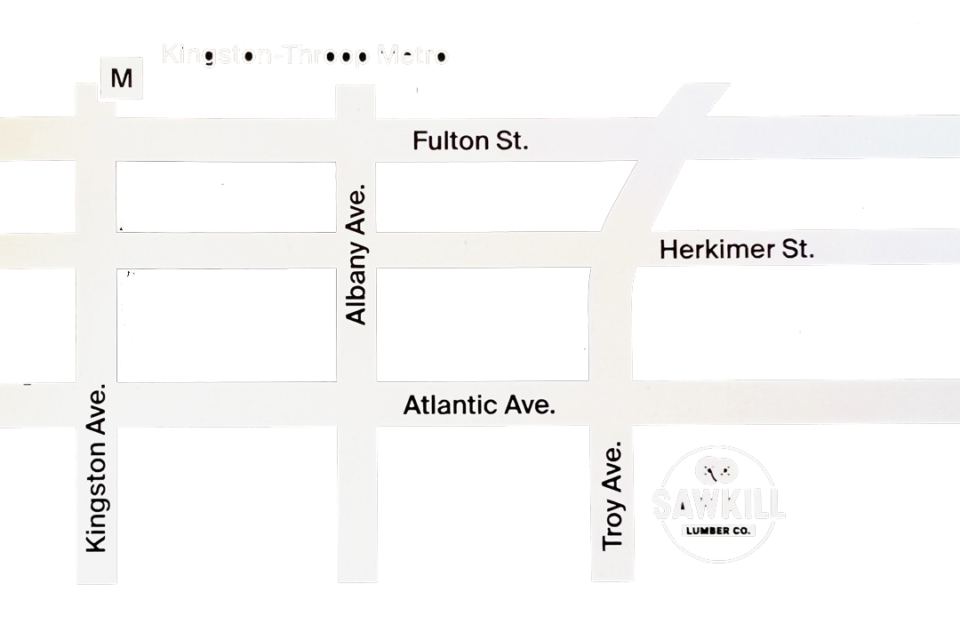Sizes: 1/2″-4/4 thickness x 3-9″ widths x 3-16′ lengths
Applications:Paneling, flooring and furniture.
Defining Characteristics: Deep amber color from saturated oils, tight heartwood figure, occasional nail holes, sound tight knots.
After old wood is re-surfaced, the clearest sign that it’s reclaimed are the nail holes, framed with a dark ring that looks like a permanent black eye. The distinctive mark results from the century long decomposition of old iron (before harder steels were achieved around 1890) which bleeds into the surrounding wood fibers. The reproduction world hasn’t bothered trying to make faux iron-stained nail holes.
Nail removal takes time and labor. All salvaged lumber passes through the metal detector; it searches for broken off nails buried under the surface, and sets off a beep, familiar to both Homeland Security personnel and scrap wood de-nailers, when it picks up a piece of ferrous. A range of hand tools are then set into motion: cat paws, chisels, hammers, vice grips and an ingenious old devise called the “Crescent Nail Puller”. Seconds, sometimes minutes later, just a tiny specimen of metal is pulled out. But that’s all it takes to force a blade change.
The dark nail hole is a portal to the woods past. A 19th c. manufacturer (possibly from Birmingham or Sheffield, England) cut a tapered square “Class B” nail from a sheet of iron and forged on it a tiny head, shipped it off to a New-York hardware dealer (early at Pearl and Platt Street), where it was sold at auction to building suppliers in other areas of the city (and developing continent). At some point, a builder banged the nail through a floor board and into a freshly sawn joist below. A hundred and twenty years later, it will see the light of a 21st century city. Nail holes carry their own mystique, the smallest residual connection with the industrial revolution.
A board with a heavy nail pattern is sawn off the face of upright columns that were post-it boards for the 19th c. factory, or from joist edges where flooring was nailed to the sub-structure. A tight rich grain can also characterizes naily boards, since it represents the outer rings of a tree, which grew no thicker than a pine needle in burgeoning old forests.


